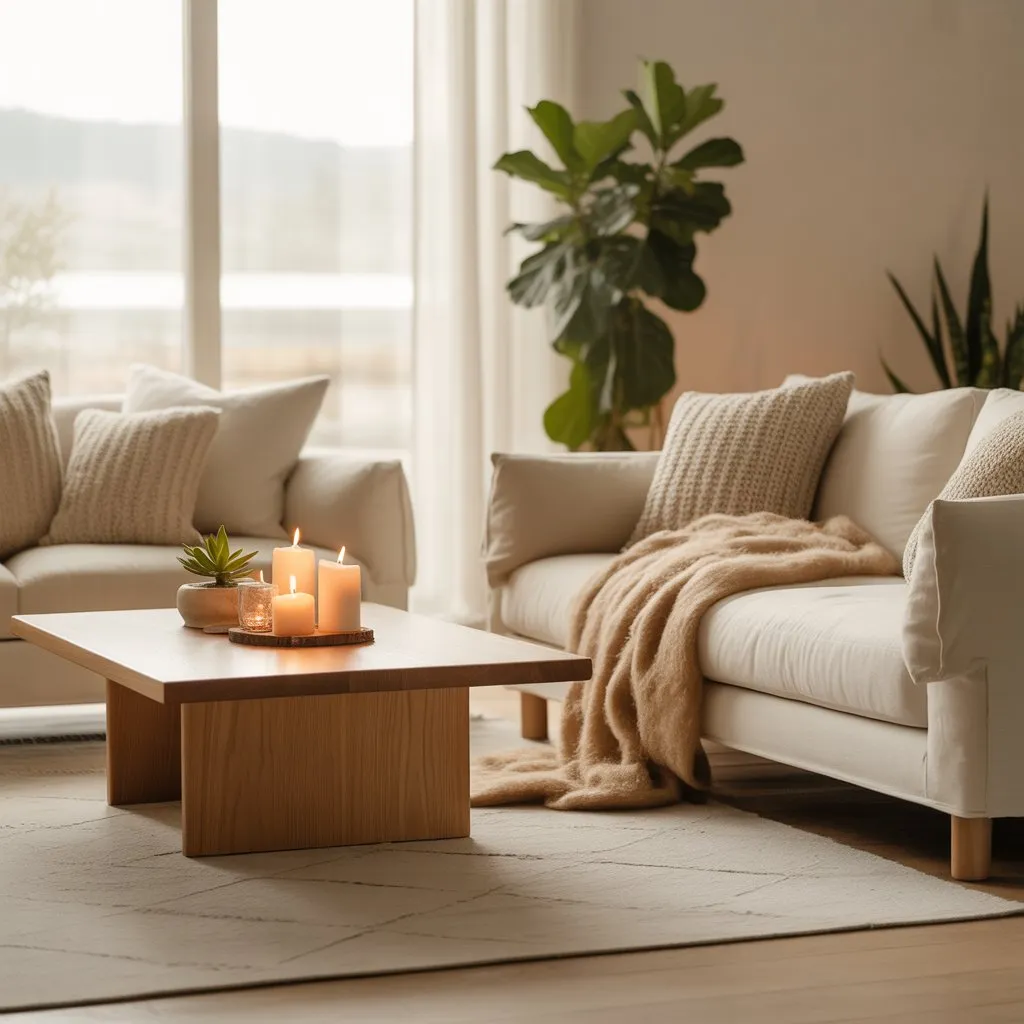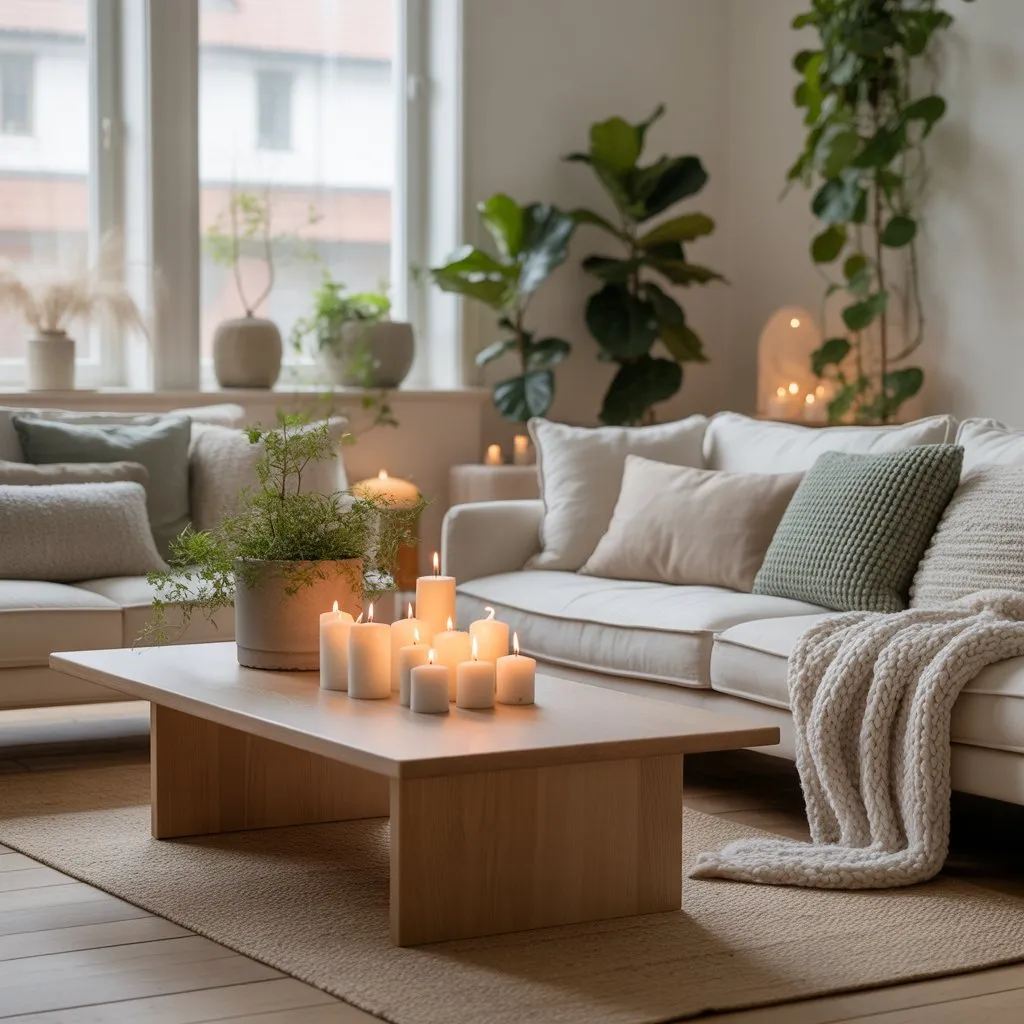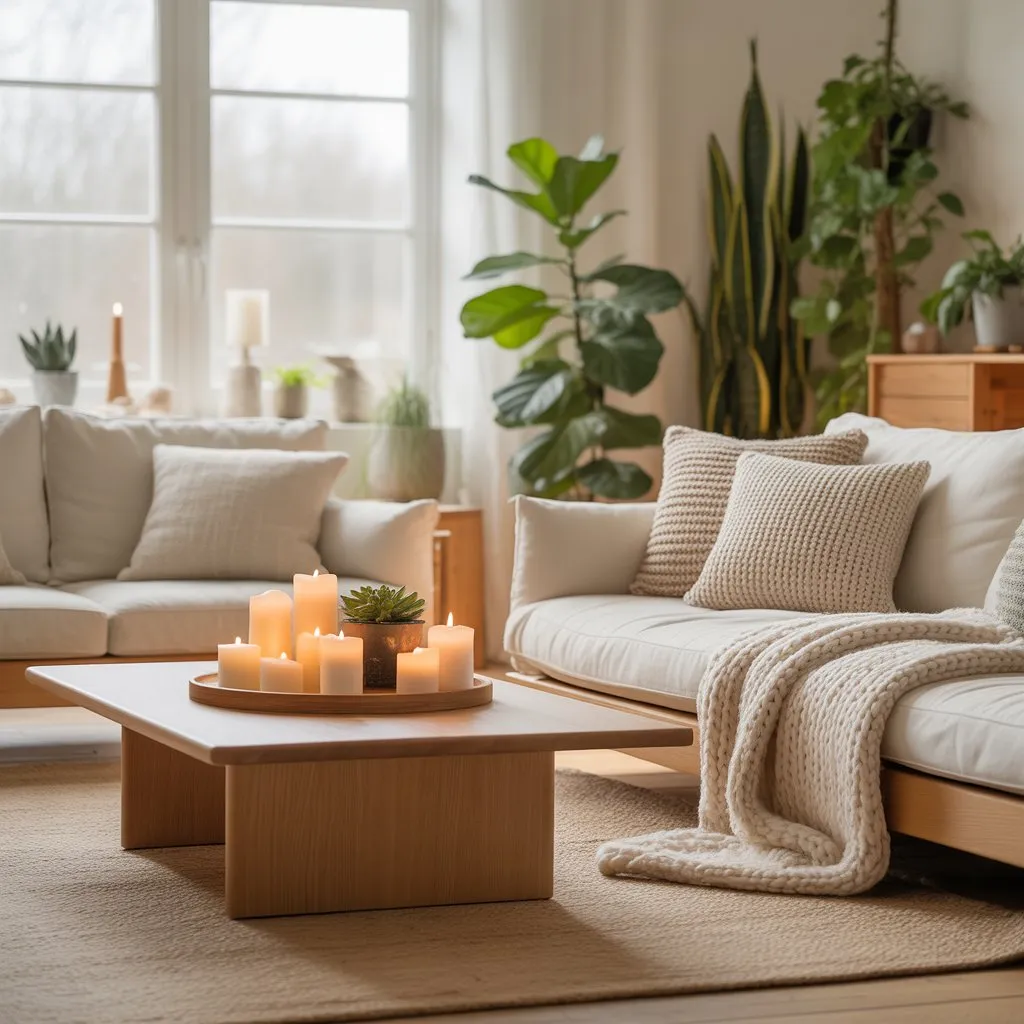Our Location
304 North Cardinal St.
Dorchester Center, MA 02124

In the fast-paced digital era of 2025, our homes have become more than just places to live — they’re sanctuaries where we seek peace, warmth, and emotional connection. That’s where Hygge Interior Design comes in.
Rooted in Danish culture, Hygge (pronounced “hoo-gah”) represents coziness, simplicity, and the joy of small moments. It’s more than an aesthetic — it’s a philosophy of comfort and mindfulness that turns ordinary spaces into nurturing retreats.
This design style has spread globally, influencing architects, designers, and homeowners who crave calm, minimalism, and authenticity. Whether you live in a compact studio apartment or a spacious modern home, Hygge’s charm lies in its ability to make any space feel comforting, inviting, and beautifully lived-in.
Derived from Danish and Norwegian words meaning “to comfort” or “to console,” Hygge is all about embracing life’s simple pleasures. It’s not about buying trendy décor pieces — it’s about surrounding yourself with things that make you feel good.
Imagine a warm blanket on a chilly evening, flickering candles on your coffee table, and a book you can’t put down — that’s Hygge in action.
Hygge has become a global lifestyle movement, inspiring not just interiors but also fashion, wellness, and even workplace culture. The Hygge interior design style emphasizes texture, warmth, and natural beauty, bringing calm energy to every corner of your home.

When translated into design, Hygge means creating an environment that radiates warmth, safety, and togetherness. It’s about designing your home around how it feels, not just how it looks.
This is why Hygge interior design often combines natural elements like wood, linen, cotton, and stone with soft, diffused lighting and clutter-free layouts. Every detail serves a purpose — to promote relaxation and happiness.
Hygge interiors balance function and comfort beautifully. For example, a Hygge living room might feature a cozy sofa with throw blankets, layered rugs, soft ambient lights, and a neutral palette of beige, ivory, or warm gray.
The growing popularity of Hygge interior design reflects a cultural shift toward mindfulness and well-being. With increasing stress levels and digital overload, people crave peaceful home environments. The Danish-inspired Hygge aesthetic provides just that — a space where warmth, connection, and comfort take center stage.
In 2025, interior designers are embracing Hygge-style living rooms, bedrooms, and even office spaces that blend Scandinavian simplicity with emotional balance.
Brands like Hygge Interior Design & Associates and Hygge Interior Design Co. have popularized this approach globally, merging modern architecture with cozy, human-centered layouts.
Creating a Hygge home doesn’t require expensive furniture or designer décor. It’s about intentional simplicity. Below are the key principles that define the Hygge aesthetic:
Hygge celebrates less is more. Avoid clutter and focus on functionality. Every piece of furniture should serve a purpose while contributing to the overall calmness of the space. Scandinavian minimalism complements Hygge beautifully, blending practicality with comfort.
Soft, natural light is a core part of Hygge interior design. Instead of harsh overhead lighting, use candles, fairy lights, and floor lamps to create a warm, cozy ambiance. The play of light and shadow transforms even small rooms into serene retreats.
Hygge color palettes include warm neutrals like beige, cream, taupe, and muted grays. These tones create harmony and depth, encouraging relaxation. You can add subtle pops of color through plants or textured throws for a natural balance.
Comfort in Hygge interiors comes from textural richness — knitted blankets, wool rugs, soft cotton bedding, and linen cushions. Layering different textures creates warmth and invites touch, making your home feel truly lived-in.
From wooden floors to ceramic mugs, natural materials anchor the Hygge aesthetic. Incorporate wood, rattan, stone, or clay to connect your space with the outdoors. Add greenery or dried flowers to soften the room’s energy and bring life inside.
The living room is the heart of any Hygge home. Keep it inviting yet uncluttered with comfortable seating, soft throws, and warm lighting. A neutral color base with earthy accents helps maintain calm energy. Add candles or a fireplace for that quintessential Danish warmth.
Your bedroom should be a sanctuary of peace. Choose Hygge bedroom design elements like soft duvets, textured bedding, warm lamps, and blackout curtains for restful sleep. A clutter-free environment paired with muted tones enhances comfort and tranquility.
In Danish culture, sharing meals is central to Hygge living. A Hygge-inspired kitchen emphasizes wooden countertops, open shelves, and natural light. For the dining area, focus on togetherness — warm lighting, cozy chairs, and a rustic table setup make every meal feel special.
Incorporating modern Hygge interior design into workspaces promotes productivity and calm. Use ergonomic furniture, neutral colors, and soft light. Add personal touches like plants or framed memories to keep the space grounded in positivity.

When it comes to Hygge interior design, the foundation lies in simplicity and calmness. Hygge homes are not cluttered or over-decorated; instead, they highlight minimal, functional, and emotionally uplifting décor. The idea is to let your space breathe — allowing light, texture, and emotion to flow naturally.
One of the most appealing aspects of Hygge interior design ideas is that they don’t demand perfection. A slightly unmade bed, mismatched ceramics, or a stack of old books on a wooden table — all contribute to that lived-in warmth that Hygge celebrates.
To master the Hygge interior design style, start by decluttering your home. Keep only those items that bring value or hold meaning. A clear, organized space helps your mind relax and gives the environment a soft, balanced flow.
Add storage baskets, woven bins, or natural wood shelves to maintain order while still staying in tune with the aesthetic.
The beauty of Hygge interior design lies in its harmonious blend of old and new. Mix organic materials like wood, wool, and linen with one or two standout antique pieces. This creates visual interest and tells a personal story within your décor.
For example, place a vintage mirror over a natural oak console table, or use an antique lamp to soften the mood of a modern Scandinavian living room. The mix makes the room authentic and full of life.
Lighting is one of the most crucial elements in achieving the Hygge aesthetic interior design. Natural light is uplifting, therapeutic, and mood-enhancing. Keep windows open and airy with sheer curtains, and let the daylight illuminate your interiors.
In the evenings, switch to warm-toned bulbs, candles, or fairy lights for that quintessential hygge glow. This soft light instantly transforms any space into a calm retreat.
Minimalism is not about emptiness — it’s about balance. In Scandinavian Hygge interior design, the “less is more” approach enhances comfort by focusing on essentials.
Avoid heavy or bold patterns; instead, go for subtle prints, neutral palettes, and tactile finishes. Every item should feel purposeful, timeless, and emotionally meaningful.
When you think of Hygge living rooms, you imagine soft blankets, fluffy cushions, and cozy corners perfect for unwinding after a long day. Layering textiles is a signature element of this design style.
Mix textures such as chunky knit throws, faux fur, or linen cushions. These elements invite relaxation and instantly make your space look more intimate and welcoming.
Hygge interior design colours revolve around calm neutrals like white, beige, cream, taupe, and pale gray. These shades reflect natural light beautifully and create a timeless, elegant look.
For a modern touch, consider adding muted tones of blush pink, sage green, or dusty blue. They keep your space fresh yet soothing — perfectly embodying modern Hygge interior design.
Texture is what makes Hygge design tangible. A mix of smooth, rough, soft, and woven materials adds depth and comfort. Pair wool rugs with linen drapes, or combine wooden furniture with stone accessories.
The goal is to stimulate your senses subtly — every surface should invite touch. This layering of materials defines the core of Hygge interior design & associates philosophy.
Hygge design is not just about décor — it’s about atmosphere. The key is emotional balance. Use Hygge interior design ideas that focus on creating open spaces and calm energy.
Avoid overcrowding walls or furniture. A few well-placed pieces — a reading lamp, a handmade vase, or a framed memory — go a long way in expressing warmth and personality.
Hygge homes celebrate nostalgia and connection. Displaying personal memorabilia, travel souvenirs, or family photographs fosters a sense of belonging.
Incorporating these items helps you create an emotionally rich environment, a key component of Danish Hygge interior design. It reminds you that home is not about perfection, but about feeling at peace.
Ironically, the magic of Hygge style interior design lies in its effortless appearance. Instead of chasing perfection, focus on authenticity. Your home doesn’t need to look like a magazine spread — it just needs to feel right.
Combine simple Scandinavian furniture with cozy accessories and handmade items. The goal is to design a space that reflects who you are.
Nature plays a big role in the Nordic Hygge interior design philosophy. Scandinavian winters are long and dark, so bringing in natural elements keeps the space lively.
Add indoor plants, dried flowers, or wooden accents. If you live in a city, even a few sprigs of eucalyptus or a vase of fresh flowers can recreate that Danish calmness.
Modern Hygge interior design merges minimalism with soft Scandinavian elegance. Choose sleek furniture but soften it with organic textiles, throws, and cushions.
For example, pair a minimalist sofa with textured wool rugs or linen curtains. The fusion of form and function creates a modern space that still feels cozy and human.
Mirrors can expand your space visually while reflecting natural light — a subtle trick used in many Hygge interior design living rooms. Choose round or oval mirrors with wooden or metal frames for a gentle aesthetic that complements your overall tone.
This is especially useful for small apartments where natural light is limited.
The charm of Hygge interior design lies in imperfection. Reclaimed wood, vintage fabrics, and second-hand décor pieces add soul to your home. These materials tell stories, offering comfort that no new item can replicate.
Pairing vintage décor with modern Scandinavian furniture gives your interiors personality and depth.
Whether it’s rattan baskets, linen curtains, or clay pots, natural materials ground your home. They connect you to nature and enhance mindfulness.
Avoid synthetic, overly polished surfaces — the Hygge philosophy celebrates authenticity and tactile appeal.
Above all, Hygge interior design is about emotional warmth. It’s the laughter shared around a dinner table, the comfort of a familiar blanket, or the joy of an evening spent with loved ones.
Designing your home with Hygge in mind is about creating a lifestyle centered on gratitude, love, and connection — one that welcomes you with open arms every day.

Modern Hygge Interior Design blends Danish simplicity with the warmth of coziness, making it one of the most appealing styles for today’s homes. Unlike traditional Scandinavian hygge interior design, which focuses primarily on comfort and nature-inspired tones, modern hygge combines sleek lines, neutral palettes, and functional furniture with a soft, inviting atmosphere. This design is about balancing functionality with emotional warmth, ensuring that every space feels lived-in, not staged.
Modern hygge interior design embraces the Danish philosophy of “hygge,” meaning comfort, well-being, and togetherness. This style transforms your living space into a retreat of peace, encouraging slow living and mindful relaxation. It’s perfect for people who want their homes to be both stylish and deeply comforting.
A hygge interior design living room focuses on layered lighting, cozy textures, and uncluttered decor. Start with soft lighting—such as candles, fairy lights, or warm-toned lamps. Use comfortable seating like linen sofas, wool throws, and oversized pillows. Add hygge furniture made from natural wood or rattan to create warmth and texture.
The hygge interior design bedroom embodies serenity and comfort. Use soft bedding, warm rugs, and layered fabrics. Avoid bright lights; instead, opt for dimmable lamps or candles to create a cozy glow. Keep the design minimal yet inviting.
Modern hygge interior design is deeply rooted in Scandinavian hygge interior design and Danish hygge interior design principles. The Scandinavian approach focuses on clean, minimal aesthetics, while the Danish version emphasizes emotional connection and tactile warmth. Combine both by mixing structured furniture with organic decor—like handmade ceramics or linen curtains.
To achieve the hygge aesthetic interior design, aim for harmony rather than perfection. Each object should add meaning or comfort. The space should feel relaxed, not rigid. For inspiration, you can explore hygge interior design books or magazines like Hygge Nordic Home Interior Design Magazine to see how professionals bring this aesthetic to life.
Modern Hygge Interior Design is not just a decor style—it’s a lifestyle. It’s about transforming your space into a warm embrace, reminding you that home should always feel like the safest and most peaceful place on earth.
Hygge Interior Design in Europe and Beyond
Today, Hygge interior design Europe GmbH and similar firms have popularized the concept across major cities, from Hygge interior design Frankfurt to Hygge interior design Vienna and Hygge interior design Zurich.
Many designers now offer Hygge interior design courses and consulting services to teach homeowners how to bring the Danish philosophy into modern spaces.

The beauty of Hygge interior design lies in its simplicity and warmth. It’s not about trends or perfection—it’s about creating a home that feels safe, cozy, and deeply personal. Whether you’re adopting Scandinavian Hygge interior design in your living room or adding Hygge touches to a city apartment, this timeless style offers balance, peace, and joy in everyday living.
Embrace the Hygge way, slow down, and let your home become a sanctuary of serenity and soulful design.
1. What is Hygge interior design?
It’s a Danish concept that promotes coziness, simplicity, and well-being through soft lighting, natural textures, and warm tones.
2. How can I create a Hygge living room?
Use candles, neutral colors, wooden furniture, and soft textiles like throws and cushions to make your living room inviting and relaxing.
3. Is Hygge interior design the same as Scandinavian design?
While both emphasize minimalism and functionality, Hygge adds a layer of warmth and emotional comfort often missing in strict Scandinavian modernism.
4. What materials work best in Hygge design?
Natural elements such as wood, linen, wool, ceramics, and cotton are perfect for achieving an authentic Hygge interior.
5. Can small homes use Hygge design?
Absolutely. Hygge focuses on atmosphere, not size—small apartments can feel equally cozy with the right lighting and textures.
6. What colors define Hygge design?
Soft whites, muted greys, beige, blush, and earthy tones that evoke nature are staples of the Hygge color palette.
7. Why is Hygge interior design becoming popular?
People seek comfort and mindfulness in their living spaces. Hygge design creates emotional warmth and helps reduce stress in a fast-paced world.
Related Article: Modern Traditional Interior Design – The Perfect Old and New 2025